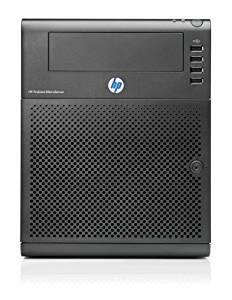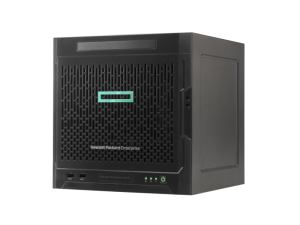 Download the HP Microsoft N54L BIOS, which resolves issues with the network card driver under Windows Server 2012 R2 and Windows 10.
Download the HP Microsoft N54L BIOS, which resolves issues with the network card driver under Windows Server 2012 R2 and Windows 10.
If you are looking for the Gen10 BIOS click here.
System ROMPaq Firmware Upgrade for HP ProLiant MicroServer (For USB Key-Media)
Type:
BIOS – System ROM
Version:
2013.10.01 (A) (15 Nov 2013)
Operating System(s):
Red Hat Enterprise Linux 5 Server (x86-64), Red Hat Enterprise Linux 5 Server (x86), Microsoft Windows Server 2008 Small Business, Microsoft Windows Server 2008 R2, Microsoft Windows Server 2008 Foundation Edition, Microsoft Windows Small Business Server 2011 Standard and Essentials, Microsoft Windows Server 2012, Microsoft Windows Server 2012 Essentials, Microsoft Windows Server 2012 R2
File name:
SP64420.exe (2.6 MB)
Important Notes:
This SoftPaq version will execute the “kbd” utility to upgrade the system bios due to a bootblock change.
Deliverable Name:
HP ProLiant MicroServer System ROM – O41
Release Date:
10/01/2013
Last Recommended or Critical Revision:
09/30/2010
Previous Revision:
07/29/2011
Firmware Dependencies:
None
Enhancements/New Features:
None
Problems Fixed:
Addressed an issue where Microsoft Windows 2012 R2 may stop responding while booting the operating system.
Known Issues:
None
Installation:
1. Obtain a formatted USB Key media.
2. Download the SoftPaq to a directory on a system running Microsoft Windows 2000, Microsoft Windows XP, Microsoft Windows Vista, Microsoft Windows 7, Microsoft Windows Server 2003, Microsoft Windows Server 2008, or Microsoft Windows Server 2008 R2 and change to that directory.
3. From that drive and directory, execute the downloaded SoftPaq file: Simply double click on the SPxxxxx.exe file and follow the installation wizard to complete the SoftPaq installation process. At the end of a successful installation of the SoftPaq a web page will automatically appear to provide you with the different methods for restoring and/or upgrading the firmware on the system.
4. After the USB Key is created, you may delete the downloaded file if you wish.
5. Insert this USB Key into the USB Key port of the system to be updated and power the system on to boot to the USB Key.



Thanks for this! The new HP BIOS policy sucks.
Thank you so much! You are a life saver!
HP rather lets us download BIOS upgrades from unverified sources. But thanks anyway 🙂
Many thaks. There was one problem with flash BIOS. First USB Key (2GB) does not work. I have to use another (8GB).
MD5 of the original file dowloaded from hp.com website: 2d8f7cfbe609ccd55f2d12c1f8d5c8a7 – SP64420.exe
Thanks ! It works
FYI, this seems to be authenticode signed, look in the digital signature tab in properties.
Installed Win 10 TP and network won’t connect. This really saved the day. Agree, HPs firmware upgrade policy is crap.
Installed W10 which broke my network card detecting the ethernet cable. This fixed it
Windows 10 Network Cable Unplugged
Thank You!!!!!
Impossible to take firmware to HP site, the server must have always a active guaranty. Thanks for availability this file.
Thank You!
Wan’t install on 64Gb Flash Drive, but works fine with 8Gb stick.
Thank you! This worked a treat, and was nice and easy. Shame on HP for not letting you get this update from them.
Thank you!! This update does not work right after installed, I reboot it several times.
Amazing, thanks for this. Worked like a charm. Can’t believe HP do not provide this as a free download!
I have a Proliant N54L with 041 bios installed. After updating to Windows 10 my ethernet no longer works. I tried to follow you upgrade procedure but I believe it is the same as I have installed. Any suggestions to get this to work.
Thanks,
Sam
this fixed by N40L wired LAN after Win 10 upgrade, nice one!
warning.
I had the same problem, a dead LAN connection after win10 upgrade.
ran this update, and it has bricked my Microserver.
it powers on, but no display, no post beeps etc. tried a bios reset, external display card etc, but no good.
if anyone has had something similar & able to restore it, then let me know.
thanks
Fixes ACPI incompatibility in proliant N54L G7 microserver bios.
ACPI error is root cause of hanging installation of windows server 2008R2+ on this hardware.
Thanks so much for making this available, taken me days to get here and I’m very grateful to have my server up again. Can’t believe HP think its OK to keep this update locked away, the server is almost useless to windows folk without it
Had to load optimal settings in bios after doing the update
then my network cable worked
stopped working because i upgraded to windows 10
might just needed to restart it a few times
Thank you so much fixed the NIC issue.
When I first tried to create the USB key on Windows 10 in another machine, it did not work (“could not format the USB Drive” error, which rendered the USB Drive corrupt), this was solved by trying the procedure on Windows 7 instead. However, another error came up (Write-Protected), which was then solved by formatting the USB Drive (8GB capacity) via command line (diskpart -> list disk -> select disk -> clean all -> create partition primary -> format fs=fat32 -> assign -> exit. Note: be very careful when following this procedure, so that you won’t delete other drives).
With this, I proceeded to use the HP USB Key Tool on the formatted USB Drive (on Win7 still). Finally, the tool worked, and all that was left was to reboot the N36L machine with the USB Drive connected. It all worked pretty fast, and when you see the prompt “C:>” then you are done, and can restart the machine without the USB Drive on.
Note that on my case it was not necessary to reload the optimal settings on the BIOS for the NIC to work again.
Thanks for the guidance! And good luck to everyone that is still on this problem (by the way, HP has let me down with their maintenance policy).
Life saver, thanks. Bloody Windows 10, a real pain in the arse.
I had this issue too so I used Rufus to create a bootable USB flash drive (FreeDos). Then copied the files across to the drive.
Booted to the Rufus based DOS, then just ran the flash.bat and all went well.
p.s. you can repair any USB drives damaged via diskpart, need to clean and create partition again, format.
It’s been so long since I did something like this. If I use Rufus, what files am I copying across to the flash drive?
Thanks for any help
After Windows 10 installation, network card detecting the unplugged ethernet cable. This fixed it.
Thanks for these files. I’m having problems getting a bootable drive created. I have only windows 10 machines plus the machine that I just tried to install Windows Server Essentials 2016 on. (Only to find that while it recognizes the network, it thinks it’s disconnected.)
Does anyone have suggestion on how to format a USB drive and copy the flat files so that it can boot?
I found a Windows Server Essentials 2012 server that was up and running and was able to get my 2GB usb drive to work with this.
I had this issue too so I used Rufus to create a bootable USB flash drive (FreeDos). Then copied the files across to the drive.
Booted to the Rufus based DOS, then just ran the flash.bat and all went well.
p.s. you can repair any USB drives damaged via diskpart, need to clean and create partition again, format.
I Also had issues running the HPQUSB.exe tool on Windows 10 and Server 2012 R2. It did however work when I right clicked the exe and chose to “Run as Administrator” Hope that helps.
Very nice. Many thanks
Just perfect!
I was so scared when the NIC would not respond, after I upgraded from Windows server 2012 to Windows Server 2012 R2.
I was about to install a separate NIC card, thank you so much!
But next time I won’t go for an HP server, that policy is pretty unreasonable, it’s not like you’re upgrading to a non supported OS.
Thank you! You are a life saver!
I have a N36L, I have tried to update BIOS using this method. but I keep ending up with a command prompt.
– Have I bricked it? Can you get new motherboards to fit in the N36L?
Then when I tried to reinstall Win10 I now get a screen saying my PC/Device needs to be repaired.
‘The boot Data file doesn’t contain enough information for an operating system’
‘File:\Boot\BCD
‘Error code: 0xc0000098’
Is this related to my attempt at BIOS update or to do with my OS installation usb?
Sounds like a bootrecord issue. Try re-creating the Windows installation media, for example with the Windows USB Media Creation Tool (from Microsoft).
Good luck!
Did you ever get this to work? All I get is the command prompt too
I had no luck, unfortunately.
I resorted to a Win 7 system to create a clean 8Gb USB stick in FAT32 format using DISKPART and used SP64420.exe to create a usable key. After booting I still get the same warnings as when I created the USB stick under Win 10.
After displaying the MAC address it reports;
“PXE-E53: No boot filename received
PXE-M0F: Exiting HP PXE ROM.
Boot failed, continue to look for Boot Media Halt for input”
My current BIOS is HP 041, 29/07/2011.
Can anyone suggest a solution, please – or point me in the right direction?
Cheers!
Fixed! Elementary error in creating bootable key. Page 1 in “The Boys Book of Computing” stuff! Hanging head in shame…..
Best Christmas present ill get this year! THANK YOU
Thx A LOT!
I was on the verge of desperation, since HPE didn’t allow me to download the 2013 BIOS file (O41, same number as before?), and finally solved the no connection NIC problem with Windows 10. And also the HP util to make the USB BOOT was unable to do the task, I had to use RUFUS and then copy and overwrite files from USB key folder. Thanks again.
Thank you very much, I was able to give life to my old server!!! Just that little bios update and voilá!
Thank you very much, I was able to give life to my old server!!! Just that little bios update and voilá!
I’ve been searching for days on Google. I installed a lot of Broadcom ethernet drivers but couldn’t solve the problem. Bios update solved my problem. God bless the person who left the file here. Thanks.